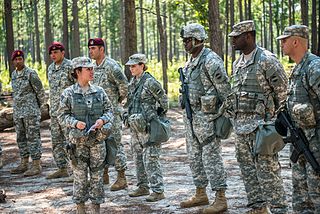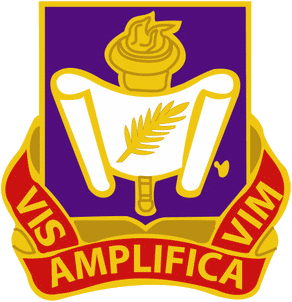This article needs additional citations for verification .(December 2009) |
The Coalition Press Information Center is a centralized media information center that was established during the 2003 invasion of Iraq.
This article needs additional citations for verification .(December 2009) |
The Coalition Press Information Center is a centralized media information center that was established during the 2003 invasion of Iraq.
During the preparations for Operation Iraqi Freedom a CPIC was established at the Kuwait City Hilton, (actually located outside Kuwait City proper in the district of Mangaf). The CPIC was staffed by members of the United States Army, Navy, Air Force and Marines; the British Army, Royal Marines and Royal Air Force and the Australian Army. The CPIC director was US. Army Colonel Guy T. Shields. The deputy director was British Army Lieutenant Colonel Robert Partridge.
A CPIC is normally responsible for delivering press releases and casualty reports, conducting news conferences, arranging interviews, and escorting media to newsworthy events. [1] With the expectation that Kuwait City would be once again invaded by Iraqi forces, Coalition Forces Land Component Command established its headquarters in Doha, Qatar and the CPIC in Kuwait City ceded to the commanders in Qatar its authority to release any information to the media.
The CPIC was established at the Kuwait Hilton in early February, 2003 by the 22nd MPAD, an active Army unit stationed at Ft. Bragg, NC. The 318th PAOC, a U.S. Army Reserve unit based out of Forest Park, Illinois, took over operation of the CPIC on February 22, 2003. Before the CPIC ceased operations in Kuwait in early May, 2003, credentials were issued to more than 6,500 journalists, permitting them various levels of access to coalition forces. [2]
After the 2003 invasion, the CPIC was established on the second floor of the Iraqi Convention Center in Baghdad's Green Zone by the 372nd MPAD, an Army Reserve Unit from Nashville, TN. It was from this location that Coalition Chief Military Spokesman Brigadier General Mark Kimmitt and Coalition Provisional Authority Spokesman Dan Senor gave many of their press briefings in the first years of the occupation. [3] In 2005, the CPIC was moved to a parking structure outside of the convention center to make way for the Council of Representatives of Iraq.
Embedded: The Media at War in Iraq, An Oral History, by Bill Katovsky, Timothy Carlson
https://abcnews.go.com/International/story?id=79598&page=1

The Kuwait Armed Forces are the military forces of the State of Kuwait. They consist of the Kuwait Air Force, the Kuwait Army, the Kuwait Navy & the Kuwait National Guard. The governing bodies are the Kuwait Ministry of Defense, the Kuwait Ministry of Interior, and the Kuwait Fire Service Directorate. The Emir of Kuwait is the commander-in-chief of all defense forces while the Crown Prince is the deputy commander.

The Iraqi Republican Guard was a branch of the Iraqi military from 1969 to 2003, which existed primarily during the presidency of Saddam Hussein. It later became known as the Republican Guard Corps, and then the Republican Guard Forces Command (RGFC) with its expansion into two corps. The Republican Guard was disbanded in 2003 after the invasion of Iraq by a U.S.-led international coalition.

The Gulf War was an armed conflict between Iraq and a 42-country coalition led by the United States. The coalition's efforts against Iraq were carried out in two key phases: Operation Desert Shield, which marked the military buildup from August 1990 to January 1991; and Operation Desert Storm, which began with the aerial bombing campaign against Iraq on 17 January 1991 and came to a close with the American-led Liberation of Kuwait on 28 February 1991.

This is a timeline of the events surrounding the United States-led invasion of Iraq in 2003.

The United States-led invasion of the Republic of Iraq was the first stage of the Iraq War. The invasion phase began on 19 March 2003 (air) and 20 March 2003 (ground) and lasted just over one month, including 26 days of major combat operations, in which a combined force of troops from the United States, the United Kingdom, Australia and Poland invaded Iraq. Twenty-two days after the first day of the invasion, the capital city of Baghdad was captured by coalition forces on 9 April 2003 after the six-day-long Battle of Baghdad. This early stage of the war formally ended on 1 May 2003 when U.S. President George W. Bush declared the "end of major combat operations" in his Mission Accomplished speech, after which the Coalition Provisional Authority (CPA) was established as the first of several successive transitional governments leading up to the first Iraqi parliamentary election in January 2005. U.S. military forces later remained in Iraq until the withdrawal in 2011.

The Battle of Baghdad, also known as the Fall of Baghdad, was a military engagement that took place in Baghdad in early April 2003, as part of the invasion of Iraq.

The Occupation of Iraq (2003–2011) was characterized by a large United States military deployment on Iraqi territory, beginning with the US-led invasion of the country in March 2003 which overthrew the Ba'ath Party government of Saddam Hussein and ending with the departure of US troops from the country in 2011. Troops for the occupation came primarily from the United States, the United Kingdom, and Australia, but 29 other nations also provided troops, and there were varying levels of assistance from Japan and other countries, as well as tens of thousands of private military company personnel.

The United States Central Command is one of the eleven unified combatant commands of the U.S. Department of Defense. It was established in 1983, taking over the previous responsibilities of the Rapid Deployment Joint Task Force (RDJTF).

The Iraqi National Guard was an armed force originally established by the United States Coalition Provisional Authority. Following the 2003 invasion of Iraq, CPA Administrator Paul Bremer disbanded the apparatus of the Iraqi Armed Forces through Coalition Provisional Authority Order 2. U.S. divisions of Combined Joint Task Force 7 then began recruiting and training auxiliary forces, the Iraqi Civil Defense Corps, in order to combat the insurgency.

The Battle of Khafji was the first major ground engagement of the Gulf War. It took place in and around the Saudi Arabian city of Khafji, from 29 January to 1 February 1991

Embedded journalism refers to news reporters being attached to military units involved in armed conflicts. While the term could be applied to many historical interactions between journalists and military personnel, it first came to be used in the media coverage of the 2003 invasion of Iraq. The United States military responded to pressure from the country's news media who were disappointed by the level of access granted during the 1991 Gulf War and the 2001 U.S. invasion of Afghanistan.

The Iraqi invasion of Kuwait began on 2 August 1990 and marked the beginning of the Gulf War. After defeating the State of Kuwait on 4 August 1990, Iraq went on to militarily occupy the country for the next seven months. The invasion was condemned internationally, and the United Nations Security Council (UNSC) adopted numerous resolutions urging Iraq to withdraw from Kuwaiti territory. The Iraqi military, however, continued to occupy Kuwait and defied all orders by the UNSC. After initially establishing the "Republic of Kuwait" as a puppet state, Iraq annexed the entire country on 28 August 1990; northern Kuwait became the Saddamiyat al-Mitla' District and was merged into the existing Basra Governorate, while southern Kuwait was carved out as the all-new Kuwait Governorate. By November 1990, the adoption of UNSC Resolution 678 officially issued Iraq an ultimatum to withdraw unconditionally by 15 January 1991 or else be removed by "all necessary means" from Kuwaiti territory. In anticipation of a war with Iraq, the UNSC authorized the assembly of an American-led military coalition.

The Iraqi Armed Forces are the military forces of the Republic of Iraq. They consist of the Iraqi Army, the Iraqi Air Force, and the Iraqi Navy. Along with these three primary service branches, there exists the Iraqi Counter Terrorism Service and the Popular Mobilization Forces. The President of Iraq acts as the supreme commander as outlined by the constitution.

Below is an estimated list of the major units deployed within the Multi-National Force – Iraq and other United States military units that were operating in Iraq under the U.S. Central Command (USCENTCOM) in 2009, during the Iraq War.

Exercise Bright Star is a series of biennial combined and joint military exercises led by the United States and Egypt. The exercises began in 1980, rooted in the 1977 Camp David Accords. After its signing, the United States Armed Forces and the Egyptian Armed Forces agreed to conduct training together in Egypt.

The 53rd Infantry Brigade Combat Team is an infantry brigade combat team of the Florida Army National Guard. The 53rd Infantry Brigade is the largest National Guard unit in the state of Florida. The brigade was one of fifteen enhanced readiness brigades, designed and trained to support active duty divisions. The brigade includes 32 units in Florida and Alabama with 4,166 authorized personnel.

The 10th Public Affairs Detachment (Press Camp Headquarters) is a U.S. Army tactical, 31-person unit providing a Battalion level headquarters and is composed of Public Affairs and support professionals, commanded by a Lieutenant Colonel and Command Sergeant Major.

The United States Army Central, formerly the Third United States Army, commonly referred to as the Third Army and as ARCENT, is a military formation of the United States Army that saw service in World War I and World War II, in the 1991 Gulf War, and in the coalition occupation of Iraq. It is best known for its campaigns in World War II under the command of General George S. Patton.

The Iraqi conflict refers to a near-continuous series of events that began with the 2003 invasion of Iraq and deposition of Iraqi president Saddam Hussein.

The 489th Civil Affairs Battalion is a civil affairs (CA) unit of the United States Army Reserve (USAR) located at the US Army Reserve Center in Knoxville, Tennessee, part of the 354th Civil Affairs Brigade, 352nd Civil Affairs Command. In turn the 354th CA Brigade is part of United States Army Civil Affairs and Psychological Operations Command (USACAPOC). The 489th is composed of Headquarters and Headquarters Company (HHC) and its four tactical companies, Alpha, Bravo, Charlie, and Delta. The unit was activated for service during World War II, Bosnia, Operation Enduring Freedom (OEF), and the Iraq War.